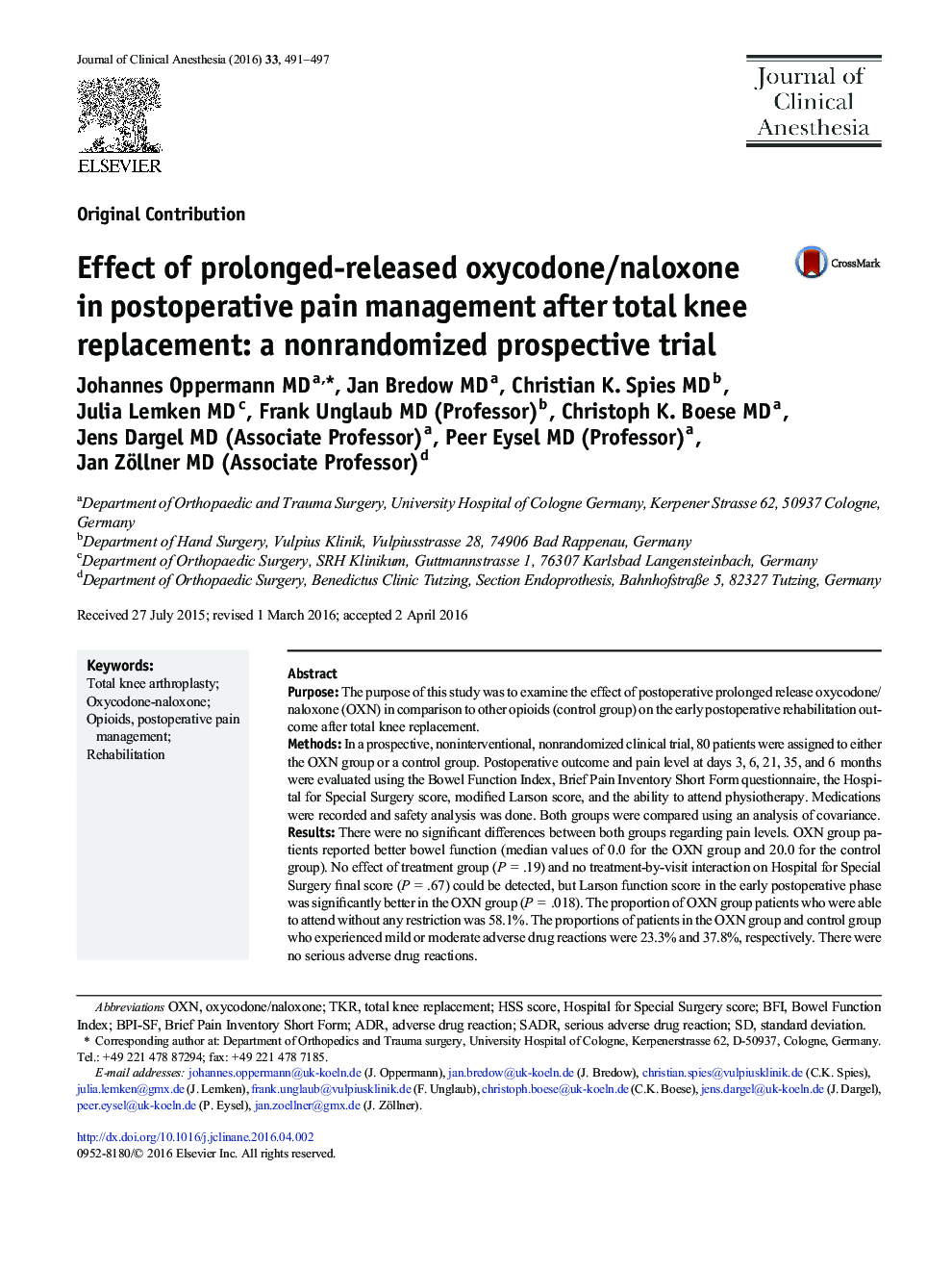| Article ID | Journal | Published Year | Pages | File Type |
|---|---|---|---|---|
| 2762136 | Journal of Clinical Anesthesia | 2016 | 7 Pages |
•The study could demonstrate the effective analgesia of prolonged-released in a real clinical set-up at an orthopedic department, especially in patients treated with knee arthroplasties.•The presented statistical analysis was done by a professional statistician with a power analysis before starting the study.•It is a prospective study with 80 patients operated on by 1 surgeon with a follow-up time of 6 months to examine the early benefit in postoperative pain-regime.•The results of this study suggest that OXN provides an effective analgesia and offers several benefits such as higher ability to participate in physiotherapy and better functional results.
PurposeThe purpose of this study was to examine the effect of postoperative prolonged release oxycodone/naloxone (OXN) in comparison to other opioids (control group) on the early postoperative rehabilitation outcome after total knee replacement.MethodsIn a prospective, noninterventional, nonrandomized clinical trial, 80 patients were assigned to either the OXN group or a control group. Postoperative outcome and pain level at days 3, 6, 21, 35, and 6 months were evaluated using the Bowel Function Index, Brief Pain Inventory Short Form questionnaire, the Hospital for Special Surgery score, modified Larson score, and the ability to attend physiotherapy. Medications were recorded and safety analysis was done. Both groups were compared using an analysis of covariance.ResultsThere were no significant differences between both groups regarding pain levels. OXN group patients reported better bowel function (median values of 0.0 for the OXN group and 20.0 for the control group). No effect of treatment group (P = .19) and no treatment-by-visit interaction on Hospital for Special Surgery final score (P = .67) could be detected, but Larson function score in the early postoperative phase was significantly better in the OXN group (P = .018). The proportion of OXN group patients who were able to attend without any restriction was 58.1%. The proportions of patients in the OXN group and control group who experienced mild or moderate adverse drug reactions were 23.3% and 37.8%, respectively. There were no serious adverse drug reactions.ConclusionIn conclusion, OXN provides an effective analgesia and offers several benefits such as higher ability to participate in physiotherapy and better functional results. Incidence and severity of constipation can be reduced by using prolonged-released OXN as compared with other opioids.
